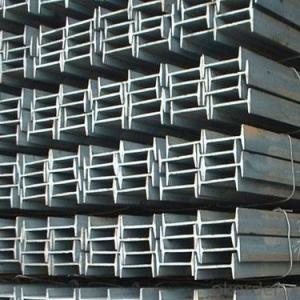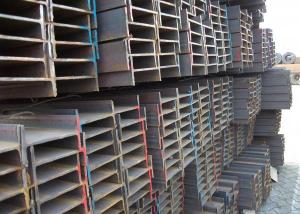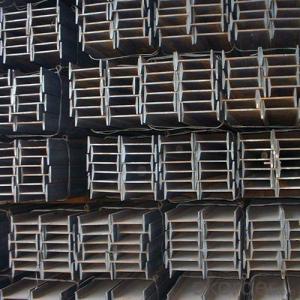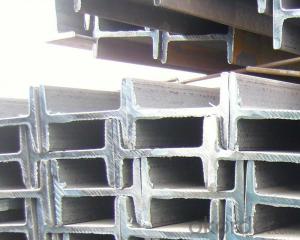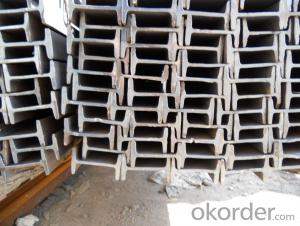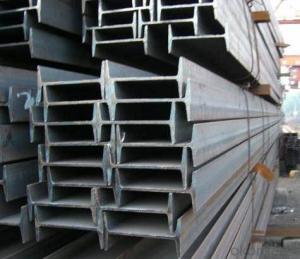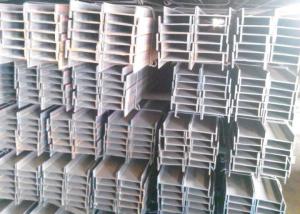European Standard IPE140 with High Quality
- Loading Port:
- Tianjin
- Payment Terms:
- TT OR LC
- Min Order Qty:
- 25 m.t
- Supply Capability:
- 15000 m.t/month
OKorder Service Pledge
OKorder Financial Service
You Might Also Like
Product Description of European Standard IPE140 with High Quality:
Specifications of European Standard IPE140 with High Quality:
1.Standard: EN10025
2.Material: S235JR or Equivalent
3.Length: 6m, 12m
4.Size:
Size (mm) | Mass (kg/m) |
| 140*73*4.7 | 12.9 |
Usage & Applications of European Standard IPE140 with High Quality:
Commercial building structure;
Pre-engineered buildings;
Machinery support structures;
Prefabricated structure;
Medium scale bridges.
Packaging & Delivery of European Standard IPE140 with High Quality:
1. Transportation: the goods are delivered by truck from mill to loading port, the maximum quantity can be loaded is around 40MTs by each truck. If the order quantity cannot reach the full truck loaded, the transportation cost per ton will be little higher than full load.
2. With bundles and load in 20 feet/40 feet container, or by bulk cargo, also we could do as customer's request.
3. Marks:
Color mark: There will be color marking on both end of the bundle for the cargo delivered by bulk vessel. That makes it easily to distinguish at the destination port.
Tag mark: There will be tag mark tied up on the bundles. The information usually including supplier logo and name, product name, made in China, shipping marks and other information request by the customer.
If loading by container the marking is not needed, but we will prepare it as customer's request.
FAQ:
We have organized several common questions for our clients, may help you sincerely:
1. How to inspect the quality?
We have a professional inspection group which belongs to our company. We resolutely put an end to unqualified products flowing into the market. At the same time, we will provide necessary follow-up service assurance.
We have established the international advanced quality management system,every link from raw material to final product we have strict quality test;We resolutely put an end to unqualified products flowing into the market. At the same time, we will provide necessary follow-up service assurance.
2. Is there any advantage about this kind of product?
Steel I beam bar IPE has a reduced capacity in the transverse direction, and is also inefficient in carrying torsion, for which hollow structural sections are often preferred.
Images of European Standard IPE140 with High Quality:
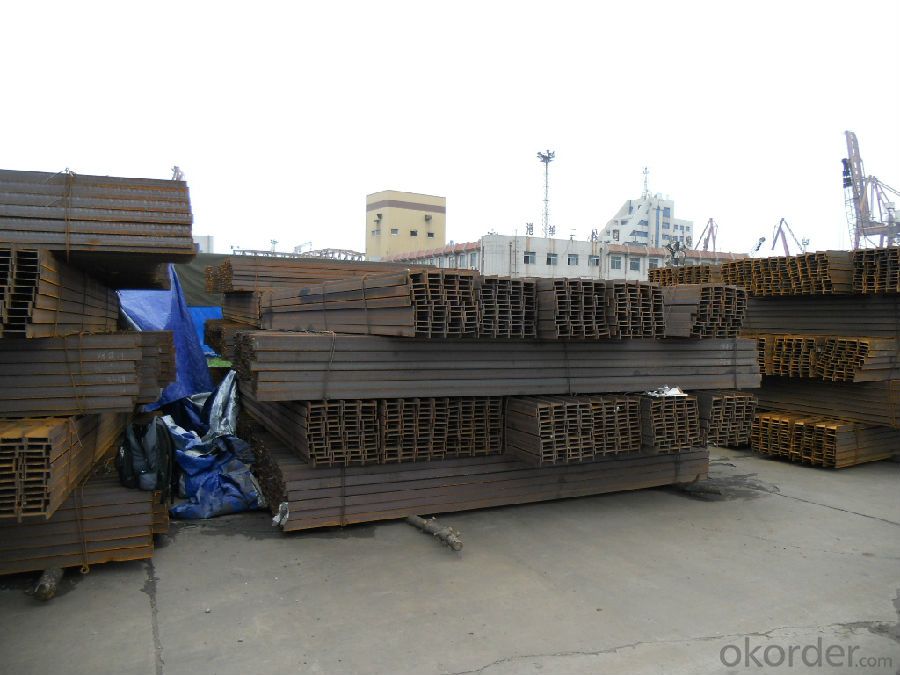
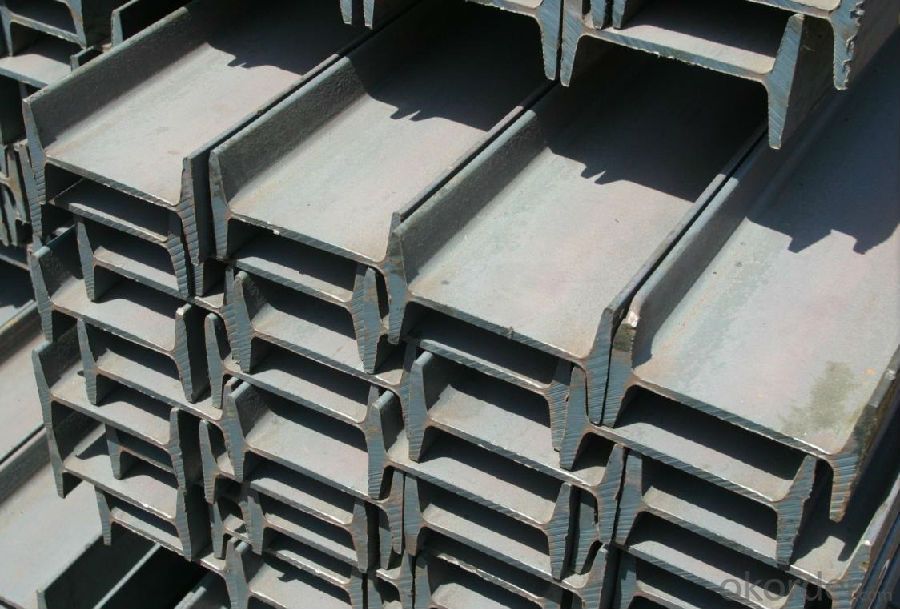
*If you would like to get our price, please inform us the size, standard/material and quantity. Thank you very much for your attention.
- Q: Can steel I-beams be used for storage facilities?
- Storage facilities can indeed make use of steel I-beams. The construction industry often relies on steel I-beams because of their exceptional strength and durability. They are frequently utilized to bear heavy loads and ensure structural stability. In storage facilities, steel I-beams can serve as the framework for shelving units, mezzanine floors, or even entire storage systems. The adaptability of steel I-beams allows for personalized designs and arrangements to optimize storage space and accommodate various types of items. Moreover, steel I-beams possess resistance against fire, pests, and moisture, rendering them highly suitable for safeguarding goods within storage facilities. Ultimately, the strength, durability, and design flexibility of steel I-beams make them a favored choice in the realm of storage facilities.
- Q: What is the difference between GB and non - marking of I-beam?
- The national standard refers to the approval issued by the national standardization administrative body, which is of great significance to the national economic and Technological Development and is unified throughout the country. The national standards are unified technical requirements throughout the country, and shall be formulated by the administrative department for standardization under the State Council to coordinate the project division of labor, organize the formulation (including revision), and uniformly examine and approve, number and issue.
- Q: Can steel I-beams be painted or coated after installation?
- Yes, steel I-beams can be painted or coated after installation. Painting or coating the steel I-beams is a common practice to provide protection against rust and corrosion, enhance their appearance, or to match the surrounding environment. The painting or coating process involves cleaning the surface of the I-beams to remove any dirt, grease, or loose material, followed by applying a primer to ensure proper adhesion of the paint or coating. Once the primer is dry, the desired paint or coating is applied using techniques such as brushing, spraying, or rolling. It is important to use high-quality paint or coating products that are specifically formulated for steel surfaces, as they provide excellent durability and resistance to weathering. Regular maintenance and periodic repainting or recoating may be necessary to ensure the continued protection and aesthetic appeal of the steel I-beams.
- Q: What are the different types of steel connections used for Steel I-Beams in industrial plants?
- Steel I-Beams in industrial plants commonly utilize various types of steel connections to ensure stability and structural integrity. Some of the commonly used connections include welded connections, bolted connections, riveted connections, moment connections, shear connections, and gusset plate connections. Welded connections involve joining the flanges and webs of the beams through welding, providing excellent strength and rigidity for heavy-duty applications. Bolted connections, on the other hand, use bolts and nuts for connection, offering flexibility in disassembling and reassembling the beams. They are relatively easy to install and can be adjusted or replaced easily. Riveted connections, similar to bolted connections, use rivets instead of bolts and nuts. Rivets are hammered through pre-drilled holes to secure the connection. Although they provide high strength and durability, their labor-intensive installation process makes them less commonly used nowadays. Moment connections are specifically designed to transfer bending moments between steel I-Beams. They are crucial in industrial plants with heavy loads, requiring additional support against bending. Moment connections are achieved through welding or bolting specialized components, such as end plates or beam seats, to the I-Beams. Shear connections transfer shear forces between the I-Beams, ensuring effective resistance to lateral or horizontal forces. They can be achieved through welding, bolting, or a combination of both. Gusset plate connections involve using a steel plate, called a gusset plate, to connect the I-Beams. The gusset plate is typically welded or bolted to the flanges and webs, providing additional strength and stability to the connection. The choice of steel connection depends on factors such as load requirements, design considerations, and construction methods. Structural engineers and steel fabricators determine the most appropriate connection type based on the specific needs of the industrial plant.
- Q: Can steel I-beams be used for sign structures?
- Yes, steel I-beams can be used for sign structures. They are often chosen for their high strength and durability, making them suitable for supporting large and heavy signs. Additionally, steel I-beams provide a stable and secure framework that can withstand various weather conditions.
- Q: How do steel I-beams perform in terms of acoustics and sound transmission?
- Steel I-beams typically have poor acoustic performance and can transmit sound easily. Due to their dense and rigid nature, they tend to vibrate and conduct sound waves effectively, resulting in significant sound transmission and minimal sound insulation.
- Q: Can steel I-beams be used in transportation or infrastructure projects?
- Yes, steel I-beams can be used in transportation or infrastructure projects. Steel I-beams are commonly used in the construction industry due to their strength and durability. They are suitable for various applications in transportation and infrastructure projects, such as bridges, highways, railways, and airport runways. Steel I-beams provide structural support and can withstand heavy loads, making them ideal for these projects. Additionally, steel is a sustainable and recyclable material, further enhancing its appeal for use in transportation and infrastructure projects. Overall, steel I-beams are a versatile and reliable choice for construction in these sectors.
- Q: How do Steel I-Beams perform in terms of energy absorption?
- Steel I-beams are known for their excellent energy absorption capabilities. Due to their shape and structural design, I-beams are highly resistant to bending and twisting forces, making them an ideal choice for absorbing and distributing energy in various applications. This is particularly important in structures that are prone to experiencing dynamic loads, such as bridges, skyscrapers, and industrial facilities. When subjected to external forces, such as those caused by earthquakes or heavy impacts, steel I-beams are able to withstand and dissipate energy effectively. Their rigid construction provides high resistance to deformation, allowing them to absorb a significant amount of energy before reaching their ultimate strength and potentially failing. This property is crucial in preventing catastrophic failure and ensuring the safety and stability of the structure. Moreover, steel, as a material, possesses inherent energy-absorbing properties. It has a high yield strength and resilience, which means it can absorb and store energy elastically, allowing for greater deflection without permanent deformation. This ability to absorb energy without sustaining permanent damage or compromising the overall structural integrity makes steel I-beams highly reliable in terms of energy absorption. Furthermore, steel I-beams can be designed and fabricated to meet specific energy absorption requirements. By adjusting the dimensions, material thickness, and overall geometry of the beam, engineers can tailor its energy absorption characteristics to suit the intended application. This flexibility allows for optimal performance and efficiency in different scenarios, ensuring that the beam can effectively absorb and dissipate the energy it is subjected to. In summary, steel I-beams excel in terms of energy absorption due to their inherent material properties, structural design, and customizability. Their ability to withstand and dissipate energy makes them a reliable choice for a wide range of applications, safeguarding structures and ensuring the safety of people and assets.
- Q: How do steel I-beams perform in areas with high levels of electromagnetic interference (EMI)?
- Steel I-beams generally perform well in areas with high levels of electromagnetic interference (EMI). Steel is a highly conductive material, which means it can effectively shield electrical and electromagnetic signals. This quality makes steel I-beams useful in reducing the impact of EMI on electronic devices and systems. The electromagnetic waves produced by EMI can interfere with the operation of sensitive electronic equipment, causing malfunctions or even complete failure. However, steel I-beams can act as a barrier, blocking or minimizing the penetration of these electromagnetic waves. This shielding effect is especially beneficial in areas where EMI is prevalent, such as near power lines, industrial facilities, or radio signal transmitters. Moreover, the structural design of I-beams, with their wide flanges and deep web, provides additional strength and rigidity to the steel. This enhances their ability to withstand external forces, including electromagnetic interference. The sturdy construction of steel I-beams helps maintain their shielding capabilities even in harsh EMI environments. While steel I-beams offer good protection against EMI, it is important to note that they are not completely impervious to electromagnetic waves. In extremely high EMI environments, such as close proximity to powerful radio transmitters or strong electrical currents, additional measures may be necessary to mitigate the effects of EMI. These measures could include using specialized shielding materials or implementing grounding techniques. In summary, steel I-beams are an effective choice for areas with high levels of electromagnetic interference. Their conductive properties and sturdy construction make them capable of reducing the impact of EMI on electronic devices and systems. However, it is always recommended to assess the specific EMI environment and consult with experts to ensure adequate protection against electromagnetic interference.
- Q: Can steel I-beams be used in renovation or retrofitting projects?
- Yes, steel I-beams can be used in renovation or retrofitting projects. They are commonly used for structural support and can be an effective solution when reinforcing or upgrading existing buildings or structures. Steel I-beams provide strength and stability, making them suitable for various renovation and retrofitting applications.
Send your message to us
European Standard IPE140 with High Quality
- Loading Port:
- Tianjin
- Payment Terms:
- TT OR LC
- Min Order Qty:
- 25 m.t
- Supply Capability:
- 15000 m.t/month
OKorder Service Pledge
OKorder Financial Service
Similar products
Hot products
Hot Searches
Related keywords
